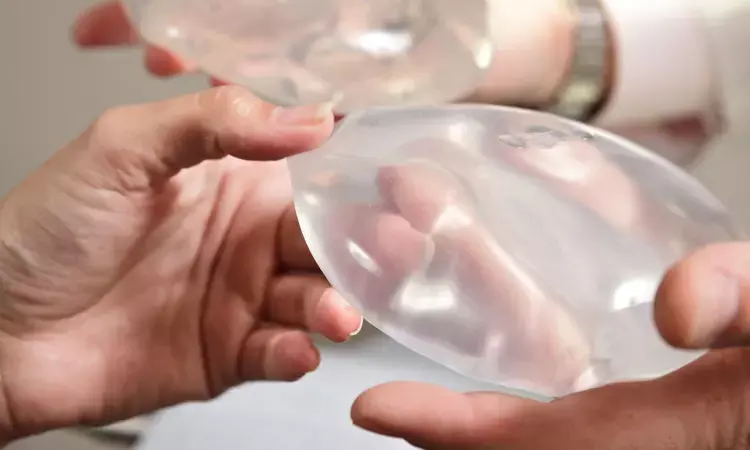- Home
- Medical news & Guidelines
- Anesthesiology
- Cardiology and CTVS
- Critical Care
- Dentistry
- Dermatology
- Diabetes and Endocrinology
- ENT
- Gastroenterology
- Medicine
- Nephrology
- Neurology
- Obstretics-Gynaecology
- Oncology
- Ophthalmology
- Orthopaedics
- Pediatrics-Neonatology
- Psychiatry
- Pulmonology
- Radiology
- Surgery
- Urology
- Laboratory Medicine
- Diet
- Nursing
- Paramedical
- Physiotherapy
- Health news
- Fact Check
- Bone Health Fact Check
- Brain Health Fact Check
- Cancer Related Fact Check
- Child Care Fact Check
- Dental and oral health fact check
- Diabetes and metabolic health fact check
- Diet and Nutrition Fact Check
- Eye and ENT Care Fact Check
- Fitness fact check
- Gut health fact check
- Heart health fact check
- Kidney health fact check
- Medical education fact check
- Men's health fact check
- Respiratory fact check
- Skin and hair care fact check
- Vaccine and Immunization fact check
- Women's health fact check
- AYUSH
- State News
- Andaman and Nicobar Islands
- Andhra Pradesh
- Arunachal Pradesh
- Assam
- Bihar
- Chandigarh
- Chattisgarh
- Dadra and Nagar Haveli
- Daman and Diu
- Delhi
- Goa
- Gujarat
- Haryana
- Himachal Pradesh
- Jammu & Kashmir
- Jharkhand
- Karnataka
- Kerala
- Ladakh
- Lakshadweep
- Madhya Pradesh
- Maharashtra
- Manipur
- Meghalaya
- Mizoram
- Nagaland
- Odisha
- Puducherry
- Punjab
- Rajasthan
- Sikkim
- Tamil Nadu
- Telangana
- Tripura
- Uttar Pradesh
- Uttrakhand
- West Bengal
- Medical Education
- Industry
Elastography useful quantitative indicator of breast implant rupture risk: Study

France: A recent study published in the Journal of Biomechanics has shown the usefulness of ultrasound elastography as a quantitative indicator of the risk of breast implant rupture and can help diagnose their replacement.
Shear-wave elastography (SWE) can visualize breast implant stiffness as implants degrade over time, measuring the risk of rupture and helping diagnose replacements for implants," Laetitia Ruffenach, University of Strasbourg, Strasbourg, France, and colleagues reported.
"By observing the consequences of the physical-chemical mechanisms at work within patients, our study showed that ultrasound elastography could be used in vivo as a quantitative indicator of rupture risk and help diagnose their replacement," Dr. Ruffenach and colleagues wrote.
Breast implants are used widely after breast cancer resection and must be replaced regularly to prevent a rupture. To date, no quantitative criteria are there to help this decision. The mechanical evolution of the implants' gels and membranes is still under investigation, although it can lead to early rupture, the researchers noted.
Elastography has been used in supplemental imaging for breast cancer diagnosis, however, its use in breast implant assessment has also been explored. This includes evaluating the impact of implants on surrounding body tissues, such as capsular contracture, inflammation, hematoma, and fibrosis.
The study's objective was to analyze the use of elastography for evaluating non-ruptured breast implants and to analyze the evolution of mechanical properties over implantation time.
In the study, the researchers characterized 35 breast explants implanted in patients for up to 17 years by ex vivo measurements of their mechanical properties. They observed an increase in the stiffness of the explants using Acoustic Radiation Force Impulse (ARFI) ultrasound elastography, an imaging method for non-destructive mechanical characterization. The increase correlated with the implantation duration, primarily following eight years of implantation.
With an increase of the shear modulus of up to a factor of nearly 3, the flexibility loss of the implants is likely to lead to a significant rise in their rupture risk.
The presence of metabolites of cholesterol originating from the breast tissues, which most likely crossed the membrane of the implants and most likely degraded the gel was confirmed by a complementary analysis of the gel from the explants by mass spectrometry imaging (MSI) and liquid chromatography coupled to high-resolution mass spectrometry (LC-HRMS).
"This preliminary study opens the way for an understanding of the mechanical phenomena leading to the implants rupture, but also to the perspective of using non-invasive elastography to predict this rupture risk and, therefore, help to diagnose the need for implant replacement," the researchers concluded.
Reference:
https://doi.org/10.1016/j.jbiomech.2024.111955
Dr Kamal Kant Kohli-MBBS, DTCD- a chest specialist with more than 30 years of practice and a flair for writing clinical articles, Dr Kamal Kant Kohli joined Medical Dialogues as a Chief Editor of Medical News. Besides writing articles, as an editor, he proofreads and verifies all the medical content published on Medical Dialogues including those coming from journals, studies,medical conferences,guidelines etc. Email: drkohli@medicaldialogues.in. Contact no. 011-43720751


